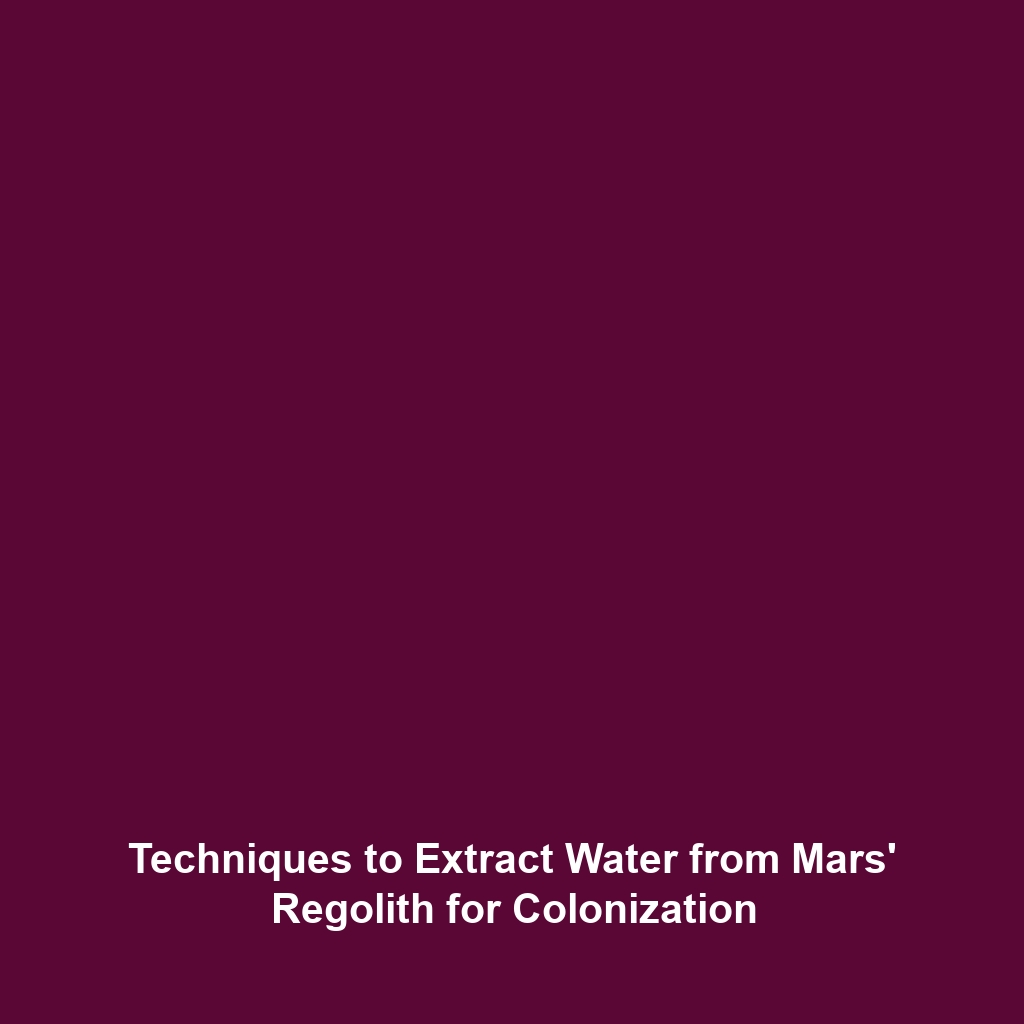<>
Extracting Water from Soil: Techniques for Extracting Trace Amounts of Water from Mars’ Regolith
Introduction
As humanity embarks on the ambitious journey of colonizing Mars, one of the foremost challenges is ensuring that ecosystems can thrive on the Red Planet. A critical resource for sustainable living is water. This article delves into the techniques for extracting water from soil on Mars, particularly from its regolith. Understanding how to efficiently harvest trace amounts of water from Martian soil is not only crucial for colonizing Mars but also for enabling long-term human presence through self-sustaining habitats.
Key Concepts
Extracting water from Mars’ regolith involves understanding several key principles:
1. Regolith Composition
Mars’ regolith consists of a mix of fine dust, rocky debris, and potential water ice. Studies suggest that regolith can contain up to 1.5% water by weight in the form of hydroxyl molecules.
2. Extraction Techniques
Multiple techniques are being developed to extract water from soil, including:
- Thermal Extraction: This method heats regolith to release water vapor.
- Chemical Extraction: Utilizing hydrophilic chemicals to bind with water molecules, allowing for easier collection.
- Electrochemical Extraction: This approach uses electrolysis to segregate water molecules from soil components.
These methods highlight the innovative strategies aimed at maximizing water recovery, essential for life on Martian colonies.
Applications and Real-World Uses
The extraction of water from Martian soil has several practical applications:
- Life Support: Extracted water can be used for drinking, irrigation, and food production.
- Fuel Production: Water can be electrolyzed into hydrogen and oxygen, which are pivotal for rocket fuel.
- Scientific Research: Studying the water extracted can provide insights into Mars’ geological history.
These applications demonstrate how methods for extracting water from soil are vital to the colonization of Mars.
Current Challenges
Despite the promising techniques available, challenges remain:
- Low Water Yield: The trace amounts of water present in regolith make extraction labor-intensive.
- Energy Requirements: Current extraction methods require significant energy, which might not be sustainable.
- Equipment Durability: Maintaining extraction machinery in harsh Martian climates presents logistical issues.
Addressing these challenges is key to making the extraction process efficient and viable.
Future Research and Innovations
Innovative research is underway to improve water extraction techniques on Mars:
- Nanotechnology: Development of nanostructured materials to enhance water capture from regolith.
- Robotic Automation: Advancements in robotics for automated water extraction to reduce human labor.
- Climate Modeling: Improved predictions of Martian weather patterns to optimize extraction timelines.
These innovations promise to pave the way for more efficient and effective methods of extracting water on Mars, significantly aiding in the colonization of Mars.
Conclusion
In summary, the extraction of water from soil is a cornerstone technique in the broader effort of colonizing Mars. As we continue to develop and refine these techniques, the potential for sustainable human habitation on Mars becomes increasingly plausible. To stay updated on further advancements and research in this field, explore our other articles on Mars colonization and space exploration.
